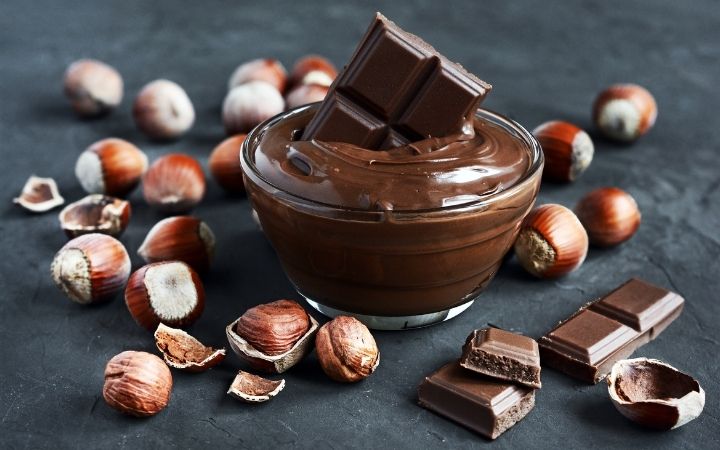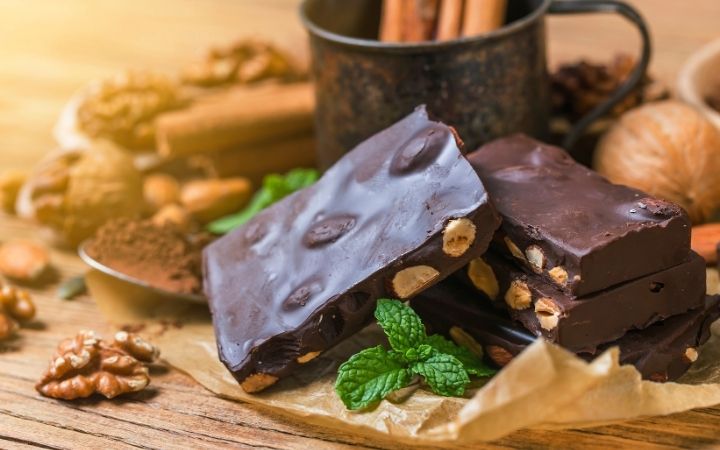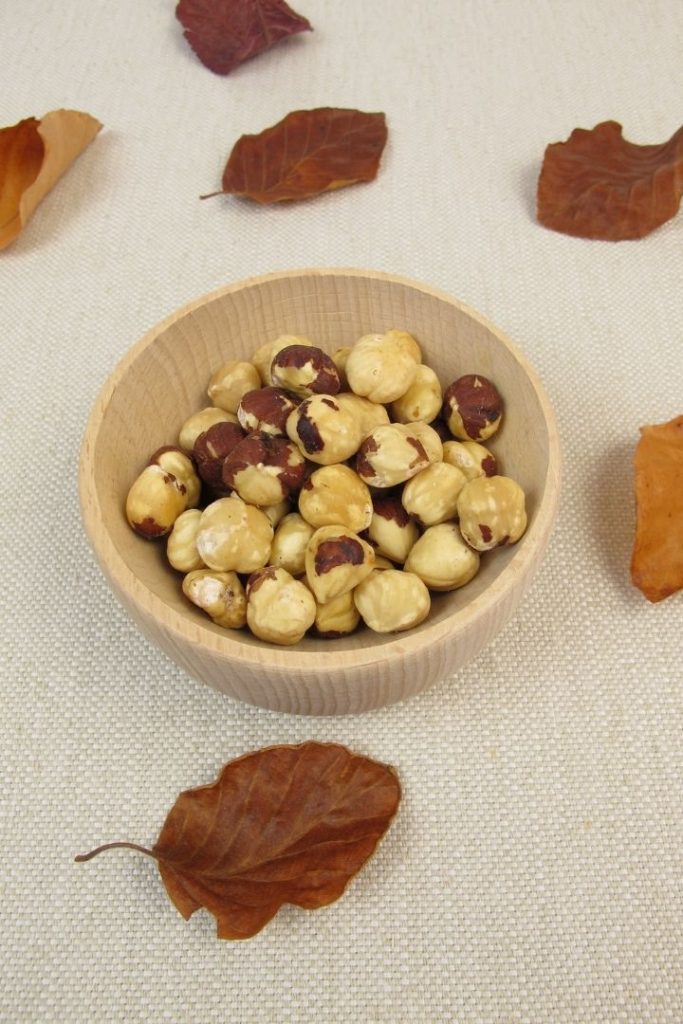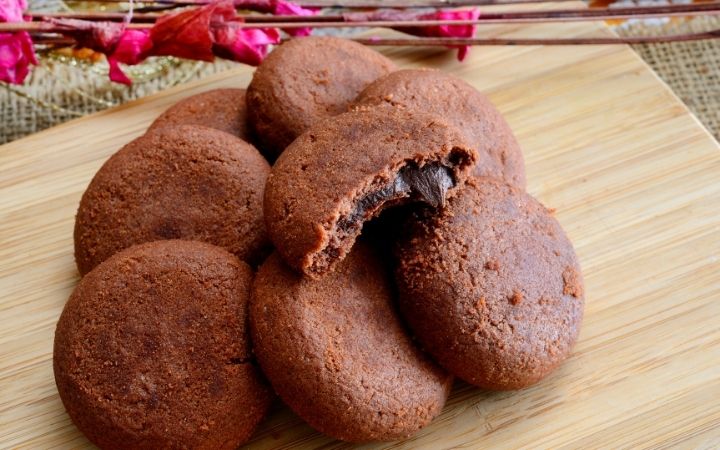If you need a confection to enjoy, then Gianduja is the way to go. It is a sweet Italian chocolate hazelnut spread. It is made from hazelnut paste that makes up 30% of the spread. It was a precursor to Nutella, which was originally known as Pasta Gianduja. Its origins can be traced back to Turin, Italy, in the mid-1800s.
The spread was invented as a way of extending the amount of chocolate available. Gianduja is a very common confection in Italy. In this article, you’ll learn a brief history of the Gianduja and how you can make your own at home using a simple recipe.
What is Gianduja, and how is it made?
Gianduja is an Italian sweet chocolate spread that comprises hazelnut paste and chocolate. It comes in different forms; it can be in the form of crunchy bars or smooth, creamy spreads. In Italy, you can find Gianduja inside gelato and also in chocolate truffles. For color, Gianduja is lighter compared to dark chocolate but darker than milk chocolate.

History of Gianduja
Gianduja was first discovered in the early 1800s in Turin, Italy. This was when the Napoleonic France had put measures that did not allow the French to do any business with the British. There was a restriction of the British goods from entering the European harbors. It became very difficult for cocoa suppliers.
The Italian government increased taxes on various items, including cocoa beans. There was a shortage of Italian chocolates, and many people, including the founder of Caffarel chocolates, Pier Paul Caffarel, began trying new recipes. For this reason, the Italian chocolatiers from Turin decided to mix hazelnuts with the little chocolate they could find. This is how Gianduja came into existence.
Out of necessity, a Turin chocolatier Michele Prochet extended the little chocolate she had by blending it with hazelnuts, sourced from the Langhe hills of South Turin. In 1852, chocolate manufacturer Caffarel, based in Turin, invented the Gianduiotto based on the Gianduja.
Where did Gianduja come from?
Gianduja was first produced in Turin, which is the capital of Piedmont in North-Western Italy. The Italian name is Piemonte, from piede, meaning foot, and monte, meaning mount. They named the confection after a character in the Commedia dell’Arte that is a common play in theaters in Italy. The name came from a peasant in the Piemontese countryside. Since most hazelnuts came from the Piemontese, they named the confection after him. A hazelnut in Italian is Nocciola.

How is Gianduja made?
Gianduja is made from high-quality hazelnuts. The hazelnuts are then roasted to get the desired aroma. They are then ground to form a powder or to form a paste in the case of a Gianduja spread. In Italy, Gianduja is in the form of a spread or a solid that you can slice.
Then, melt the chocolate together with sugar till soft. Depending on your preference, you can opt for milk chocolate or dark chocolate. Blend the hazelnuts with the chocolate to achieve the hazelnut chocolate. A chocolate hazelnut spread is hence formed. You can only spread the Gianduja when it is warm. When it cools, it solidifies.
Gianduja to try at home
You can make the Gianduja at home. Here is a simple recipe that you can try at home.
Dark Chocolate Hazelnut (Gianduja) Spread
Makes about 3 cups
Ingredients
- 5 oz chocolate (60-70% cocoa) chopped into tiny pieces. You can use a sweeter Gianduja instead of milk chocolate or bittersweet chocolate chips.
- 8 oz whole hazelnuts
- A higher percentage of cocoa means that the amount of sugar in your Gianduja will be lower.
Instructions
Roast the nuts
- Preheat the oven.
- Prepare a baking sheet by lining it with parchment paper.
- Place the baking tray in the center of your oven, toast the hazelnuts at 350 degrees Fahrenheit for 15-20 minutes.
- Stir them until they are golden brown. They should not be burnt.
- Wrap them in a clean towel for them to cool. After they have cooled, remove the skin by rubbing them off using the towel. You can also use your fingers to remove the skin. It is not harmful to leave the skin, but the Gianduja will have a bitter taste if you do.

Melt the chocolate
Melt the 8 oz of dark chocolate in the microwave.
- Use a plastic container so that you don’t burn the chocolate. Please don’t use a ceramic or a glass container; they retain a lot of heat that may burn the chocolate.
- Microwave for 2 minutes and stir after every 45 seconds.
- Microwave at intervals of 10 seconds.
- After the chocolate is 80% melted, stop so that you don’t burn the chocolate. This process should take less than 5 minutes.
Blend
- To make the Gianduja, put the hazelnuts in a food processor and blend them to form a hazelnut paste. The consistency needs to be like a hazelnut cream strain.
- Add the melted chocolate to the paste and mix it until it is creamy.
- Your Gianduja is now ready.
You can store the Gianduja in an air-tight container. Please keep it away from any sunlight. It can remain fresh for 1-2 months. If you choose to refrigerate it, it can last for 6-12 months. If you choose to refrigerate it, you will be forced to microwave it whenever you want to use it. Apart from microwaving, you can leave it at room temperature for several hours to get back to its consistency before using it.

Summary
In short, the Gianduja is a must-try confection for you. Apart from the spread, you can also bake a Gianduja cake, which will require 30 minutes to 1 hour of your time.
You can also choose to make chocolates with hazelnuts; in this case, the chocolate is covered with roasted hazelnuts. Regardless of the type of Gianduja you have prepared, you can eat it directly or spread it on a croissant or toast.
It is also an excellent ingredient for baking. With the Christmas holidays approaching fast, you can incorporate the Gianduja somewhere in your servings to give it a traditional Italian touch.
Whichever way you decide to use it, please make sure you enjoy it!

Community of passionate writers and content creators who share a love for Italian heritage, culture, travel, food, and the Italian-American community. Our mission is to celebrate Italy’s rich history and traditions and connect with others who share the same passion.

